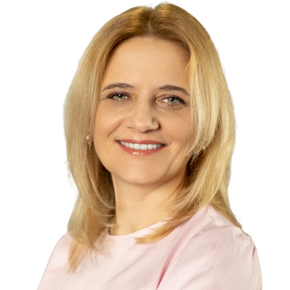Estonian CIT – an option worth considering
What has come to be known as Estonian CIT – a flat rate on corporate income – is becoming a more and more interesting form of taxation every year. The name for this method of taxation comes from the fact that a similar system was first introduced in Estonia. The effect was to almost double the rate of economic growth.
Estonian CIT rules can be applied by joint-stock companies, limited liability companies, limited partnerships, limited joint-stock partnerships and simple joint-stock companies as long as, among other things:
- they employ at least three people for at least 300 days in a tax year;
- the shareholders or partners of the businesses are exclusively individuals who do not hold shares in the capital of other companies, participate in an investment fund or a joint investment institution, or all of the rights and obligations in a company that is not a legal entity; and
- report their decision to be taxed at a lump-sum rate to the head of the relevant tax office by the end of the first month of the first tax year in which they are to be taxed at a lump-sum rate.
With Estonian CIT, there is no need for tax accounting, tax deductible expenses or calculations of tax depreciation. Monthly advance tax payments do not apply here – in Estonian CIT, tax is paid when distributing profit from the company (dividends). This undoubtedly has a beneficial effect on the company’s liquidity.
In addition, at the time of taxation, i.e. at the time of distributing the profit/dividend, the effective tax rate will be 20% instead of 26.29% for small taxpayers, and 25% instead of 34.39% for other taxpayers.
Lump sum taxation on corporate income covers income determined as:
- Net profit generated during the lump-sum rate taxation period to the extent that it is distributed to shareholders or partners (distributed profit income) or to cover losses arising in a period prior to the lump-sum rate taxation period (profit income intended to cover losses)
- Hidden profits in the form of cash or in-kind benefits made to shareholders, partners or to entities directly or indirectly related to them, in particular in the form of: (a) loans granted by the company to a shareholder or partner, together with interest, commissions, remuneration and fees on such loans; (b) benefits performed by the company for a private or family foundation; (c) the company paying more than the market value in a transaction with a shareholder or partner or related entity; (d) the company repaying additional payments to shareholders in an amount higher than the original additional payment; (e) the redemption of shares paid from profit to a shareholder; (f) using profits to increase the share capital; (g) donations, including gifts and grants of all kinds; (h) entertainment expenses.
- Non-business expenses
- Overpayments of assets acquired or contributed in kind over the tax value of those assets (income from a change in the value of assets) – in the case of mergers, demergers, transformations or contributions in-kind in the form of an enterprise or an organised part thereof
- The value of income and expenses subject, in accordance with accounting regulations, to be booked in the tax year and included in net profit (loss), which were not included in that net profit (loss) (income from undisclosed business operations)
- Additional capital payments returned in the event of a merger or division
- Interest on a shareholder’s share of the capital
- Profit allocated to replenish a shareholder’s share of the capital
- Cash and non-cash benefits paid when a shareholder’s share in the capital is reduced.
- And in the case of a taxpayer who stops applying the Estonian CIT, the sum of the net profits made in each tax year of applying the lump-sum rate taxation that were not distributed or allocated to cover losses (net profit income).
By the end of the third month of the tax year, a taxpayer must submit a declaration on the amount of income earned for the previous tax year. This declaration must be submitted to the tax office electronically – on the CIT-8E form.
More info:
This article is part of the Newsletter No. 1 | 2023.


